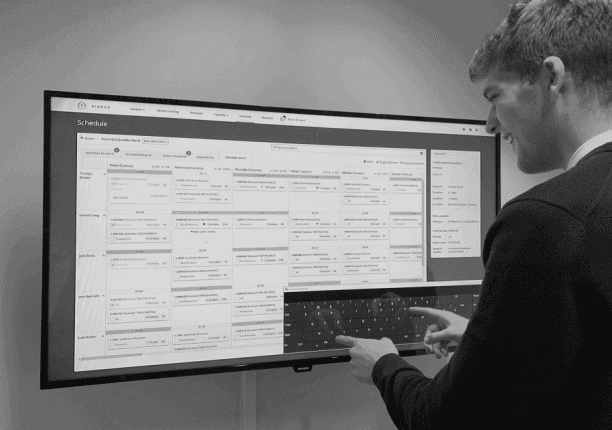
Six simple steps to achieving actionable KPIs
Have you ever seen the KPI dashboards used by e-commerce companies like Amazon? Aren’t they awesome?! They track dozens of performance metrics, all at the same time, and each KPI is tracked with dazzling accuracy. We’re talking about millions of data points being aggregated in a seamless fashion to allow users to connect all the dots in a way that makes sense, pulling the pattern out of the noise. But what can you learn from this to improve your lab KPIs?
Even though (unlike Amazon) most laboratories don’t currently sit on mountains of digital data, they do have more data digitally available than ever before, which begs the question: what do you do with it? Well, having a comprehensive KPI dashboard that helps you visualize the important trends in your lab’s performance is a great place to start!
Ultimately, KPIs, reports & dashboards must reduce ambiguity and enable action; if they can’t achieve this then they are worthless. So how do you ensure your lab performance KPIs add value and are actionable? Try following these 6 steps:
STEP 1: What to measure?
You can measure a thousand things in a thousand different ways. The trick is to start with a shortlist of key metrics that represent the core of your lab’s operational performance. For instance, you may want to begin by prioritizing:
- Business focus
- Service level
- Throughput
- Process focus
- Asset utilization
- First time right
- Quality
- Employee retention
- Campaign efficiency
STEP 2: When to measure?
Becoming operationally excellent is not a one-time journey, it’s a constant mission to both stay efficient and improves performance wherever possible. To find the right balance, consider that:
- Some KPIs and metrics will be evergreen for your business and you will want to measure these all the time
- But you should also ensure that the frequency of measurement is aligned with governance and management processes and priorities.
- Sometimes you will need to rapidly add new KPIs for ad hoc data analysis to monitor performance and support improvements, for instance:
- Exploring how the business absorbs impactful events and changes that might disrupt operations and performance (e.g. new infrastructure, organizational changes, new product introductions, mergers and acquisitions);
- Investigating business enhancement opportunities proposed by the Operational Excellence team.
STEP 3: How to measure?
Perhaps the biggest enemy of actionability is a lack of trust in the data. To counter this, think about:
- Strategy: do we want to standardize our KPIs across the lab entire network?
- Garbage in, garbage out: how reliable is our data? What is the acceptable level of reliability? How do we get there?
- Buy-in: align around a common definition of each KPI and push for formal agreement by all key stakeholders
STEP 4: Where to set your targets?
Analyze where you are and where you want to go, for instance:
“We have a service level of 84%, we want to get it to 90% by end of the year”
As a minimum starting point, typical lab systems (e.g. LIMS, ELN, Excel) should contain the data to measure the primary metrics: service level and throughput.
STEP 5: How to realize your targets?
Define all potential actions that lead to your targets by translating your primary service level target into a set of potential secondary, quantifiable goals; for instance:
“We will increase our service level by:”
- “Increasing our lab efficiency”
- “Outsourcing certain work”
- “Hiring 1 additional lab analyst’
As measuring some of the secondary performance KPIs (like detailed utilization rates) is not possible in typical lab tech stack (LIMS, ELN, Excel), you may need to look into other systems to collect the required data (resource management systems).
STEP 6: Which tactics give the best business benefits?
The ‘throw enough at the wall to see what sticks’ approach does not work; instead, do everything in your power to estimate the return on your different actions. In other words: which of the options you’ve identified in step 4 is the best way forward? To achieve this, you will need forecasting & simulation capabilities.
Why not check out our webinar on this topic to get more information and see a practical guide on how you can implement these 5 steps in your laboratory?
-
KPI dashboards in QC are crucial as they enable lab personnel to see relationships between different metrics and make informed decisions about how to optimize lab performance. Based on…Read more
-
6 KPIs positively impacted by lab digitalization
Digital innovations make labs more agile, reliable, compliant & efficient but how can you make lab digitalization work for you as a planner?Read more -
On-demand free course – Leading KPIs optimize your lab performance
Read more
Adam Lester-George
Adam has two decades of experience working in clinical trials, biomedical research, public health, and health economics, with a particular interest in the intersection between technology and life sciences. For 7 years before joining Bluecrux in 2019, Adam was the director of healthcare innovation consultancy “LeLan” and brings a wide range of insights to his role as Content Specialist for Binocs.





